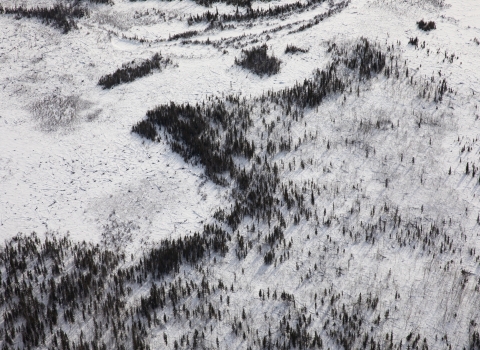After reviewing all available scientific and commercial information, the U.S. Fish and Wildlife Service has determined that listing for seven species of Hawaiian yellow-faced bees as endangered throughout their range is warranted. The result of the 12-month petition finding was published in the Federal Register today.
Listing these seven species of Hawaiian yellow-faced bees is not possible at this time due to higher priority actions to amend the Lists of Endangered and Threatened Wildlife and Plants. Upon publication of this 12-month petition finding, the Service will add these seven species of Hawaiian yellow-faced bees to our candidate species list. A proposed rule to list these seven species of Hawaiian yellow-faced bees will be completed as Service priorities allow. A determination on critical habitat will be conducted during development of the proposed listing rule. During the interim period, the Service will address the status of the candidate species through our annual Candidate Notice of Review.
Lacking common names for each species, the seven species are identified by their scientific names Hylaeus anthracinus, Hylaeus assimulans, Hylaeus facilis, Hylaeus hilaris, Hylaeus kuakea, Hylaeus longiceps, and Hylaeus mana.
“Pollinators such as Hawaiian yellow-faced bees are critical components of a healthy environment and society,” said Loyal Mehrhoff, field supervisor for the Fish and Wildlife Service’s Pacific Islands Fish and Wildlife Office. “By taking action to protect imperiled wildlife and plants, we can ensure a healthy future for our community and protect treasured landscapes for future generations.”
Threats to the seven species of Hawaiian yellow-faced bees include the present or threatened destruction, modification, or curtailment of their habitat by urbanization, land use conversion, nonnative plants and animals; predation by nonnative ants and the western yellow jacket wasp; inadequate habitat protection; small population sizes; and competition with nonnative invertebrates such as the European honey bee. These threats are ongoing and, in some cases (such as some nonnative species) are considered irreversible. Fire is also a potential threat to the habitat of these species in some locations.
The seven species belong to the Hawaiian genus Hylaeus which is part of the Colletidae family of bees, also known as plasterer bees due to their habit of lining their nests with salival secretions. The family is comprised of over 2,000 species, all of which are solitary nesters - unlike social wasps and bees. Hylaeus is a large, globally-distributed genus comprised of over 500 species worldwide. Relatively small in size compared to other bees, the genus is widespread and very diverse in the Hawaiian Islands, with 60 native species, including 20 that are endemic (found nowhere else) to single islands. Hylaeus bees are commonly known as yellow-faced bees or masked bees, for their yellow to white facial markings.
The current distribution of the seven species of yellow-faced bees varies from lower elevation coastal and dry shrubland habitats to mid-elevation (up to 3,000 feet) mesic and wet forest habitats. Hylaeus facilis is found on the islands of O‘ahu, Moloka‘i, and Maui. Hylaeus longiceps is found on the islands of O‘ahu, Moloka‘i, Lana‘i and Maui. Hylaeus anthracinus is found on the islands of O‘ahu, Moloka‘i, Kaho‘olawe, Hawai‘i and Maui. Hylaeus assimulans is found on the islands Kaho‘olawe, Lana‘i and Maui. Hylaeus hilaris is found on the island of Moloka‘i. Hylaeus kuakea is known from only two collections within the Waianae Mountains of O‘ahu, and Hylaeus mana is only known to occur in the Ko‘olau Mountains of O‘ahu.
On March 23, 2009, the Service received five petitions from the Executive Director of the Xerces Society requesting that the Service list seven species of Hawaiian yellow-faced bees as endangered and designate critical habitat for the species. On May 8, 2009, a letter was sent to the Executive Director of the Xerces Society acknowledging the receipt of the petitions. At that time, the Service determined that emergency listing was not warranted.
On June 16, 2010, the Service published a 90-day finding that indicated the listing of these seven Hawaiian yellow-faced bees may be warranted.
America’s fish, wildlife and plant resources belong to all of us, and ensuring the health of imperiled species is a shared responsibility. We’re working to actively engage conservation partners and the public in the search for improved and innovative ways to conserve and recover imperiled species.
Copies of the notice of the 12-month petition finding may be downloaded from the Service’s website at http://www.fws.gov/pacificislands/.
For further information contact: Loyal Mehrhoff, Field Supervisor, Pacific Islands Fish and Wildlife Office, U.S. Fish and Wildlife Service, 300 Ala Moana Boulevard, Room 3-122, Box 50088, Honolulu, Hawai‘i 96850; telephone 808/ 792-9400 or fax 808/ 792-9581.
Endangered Species Listing Warranted for 7 Species of Hawaiian Yellow-faced Bees

